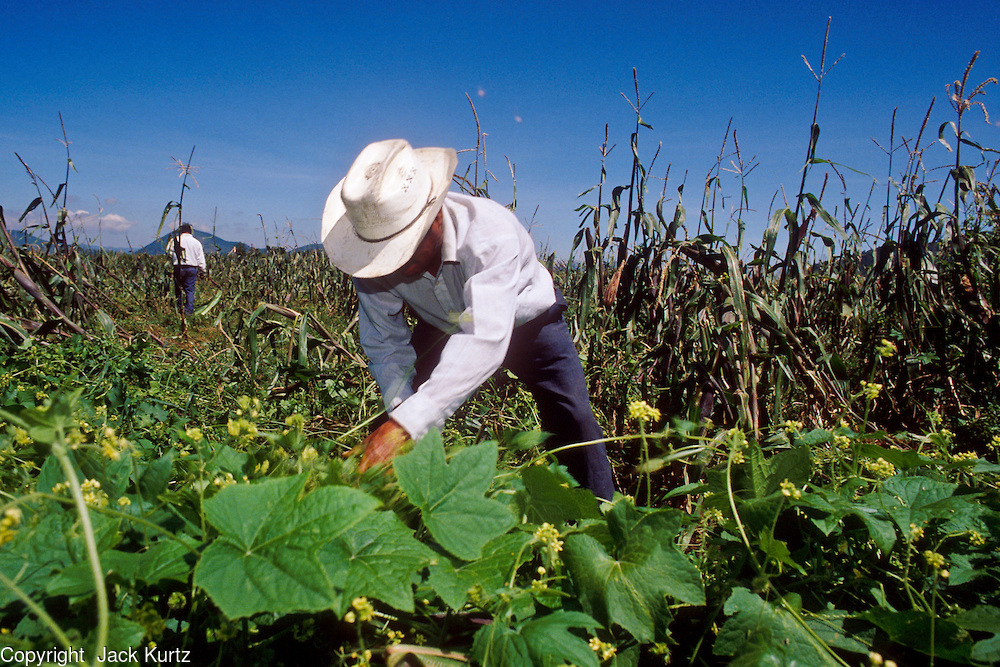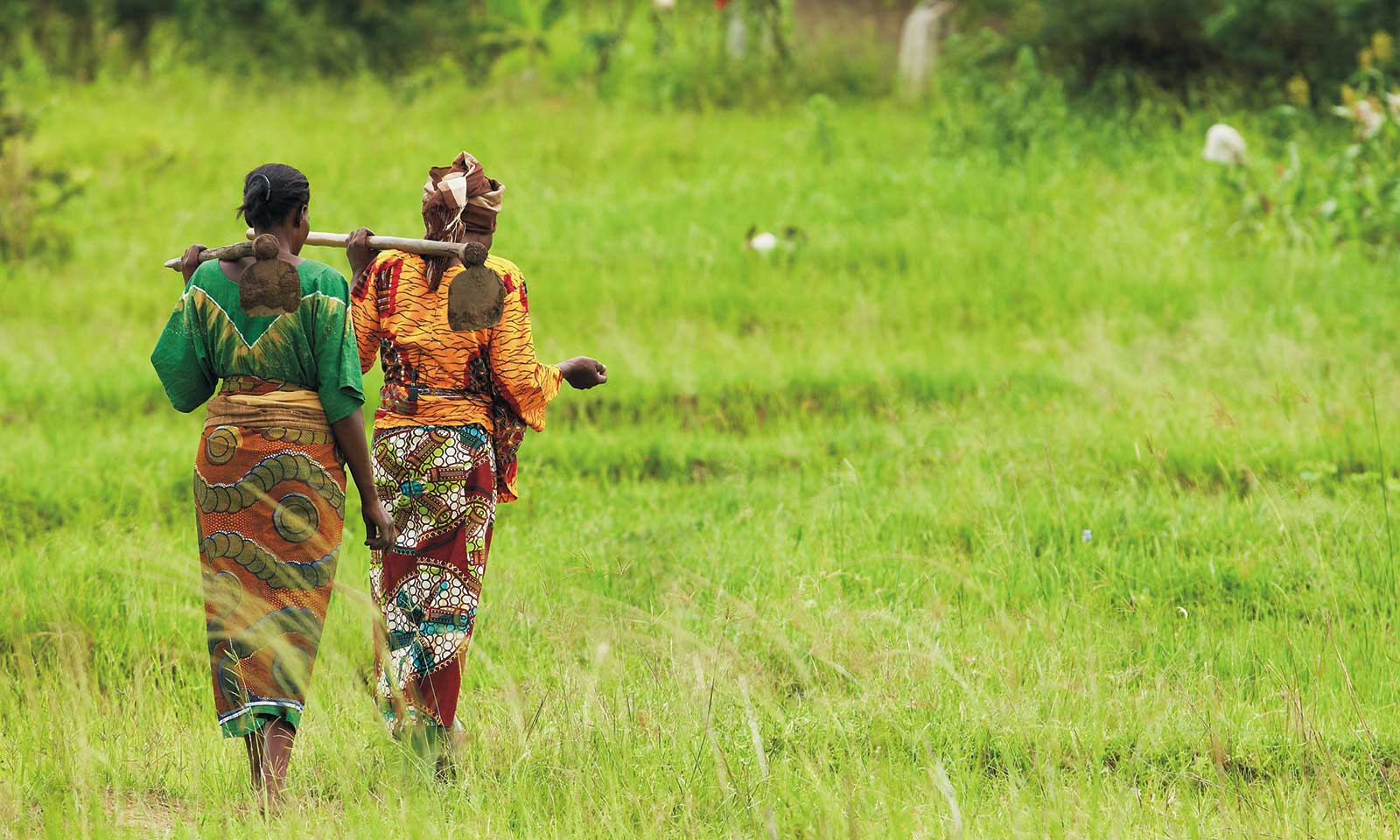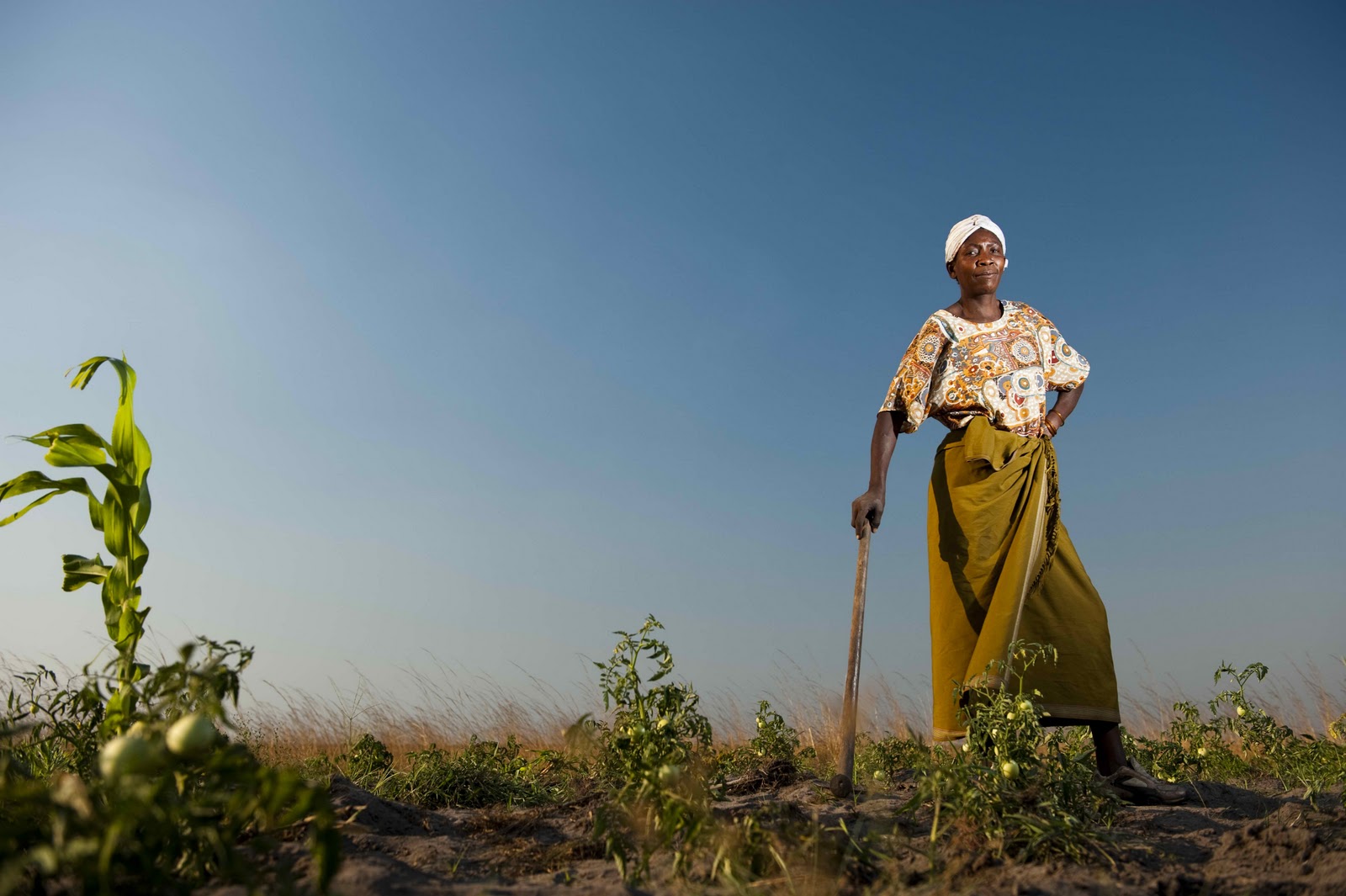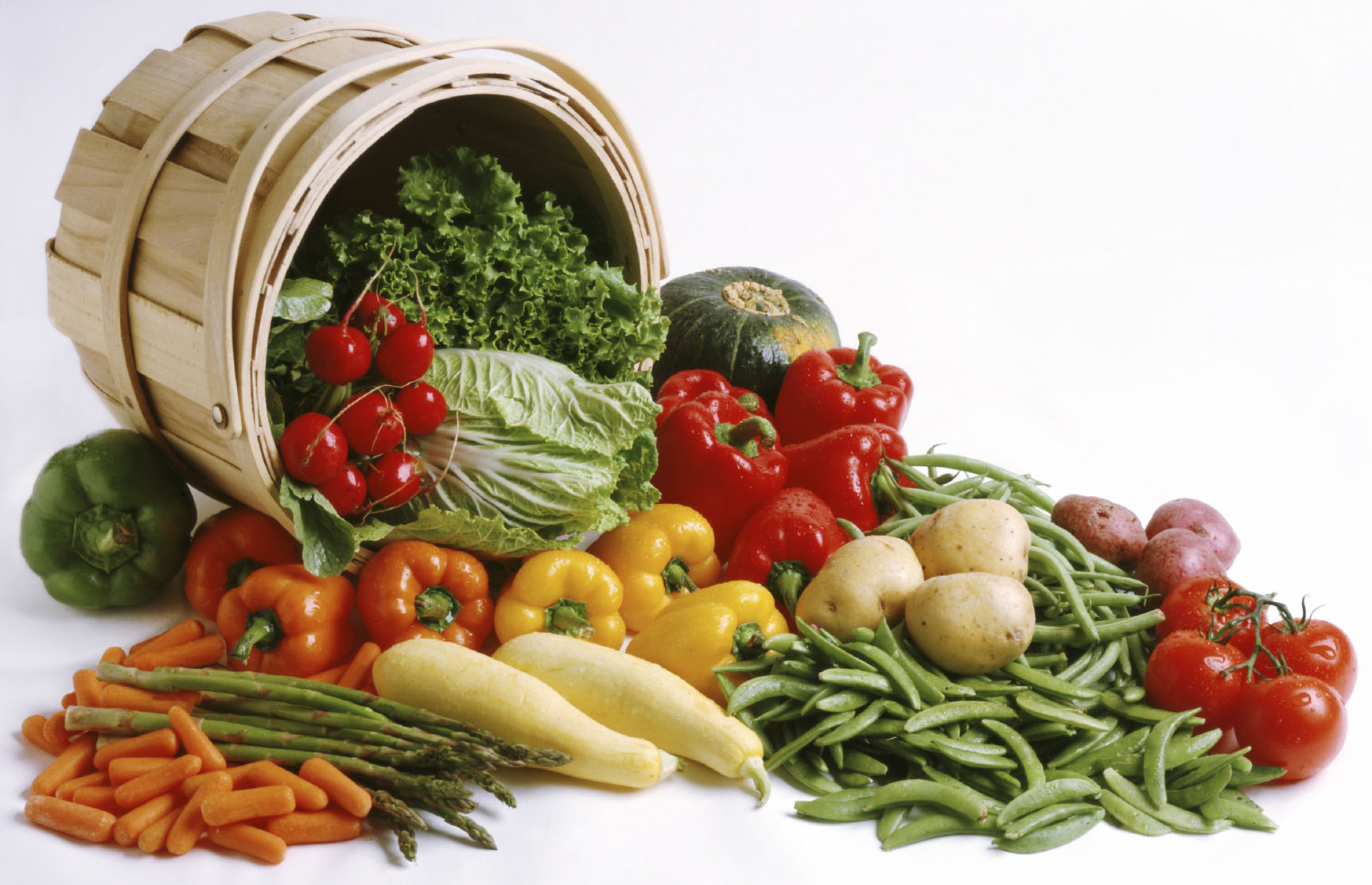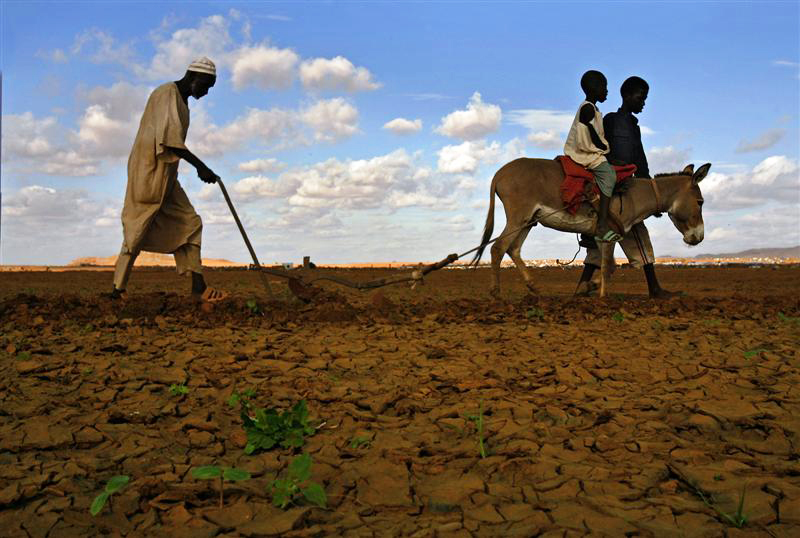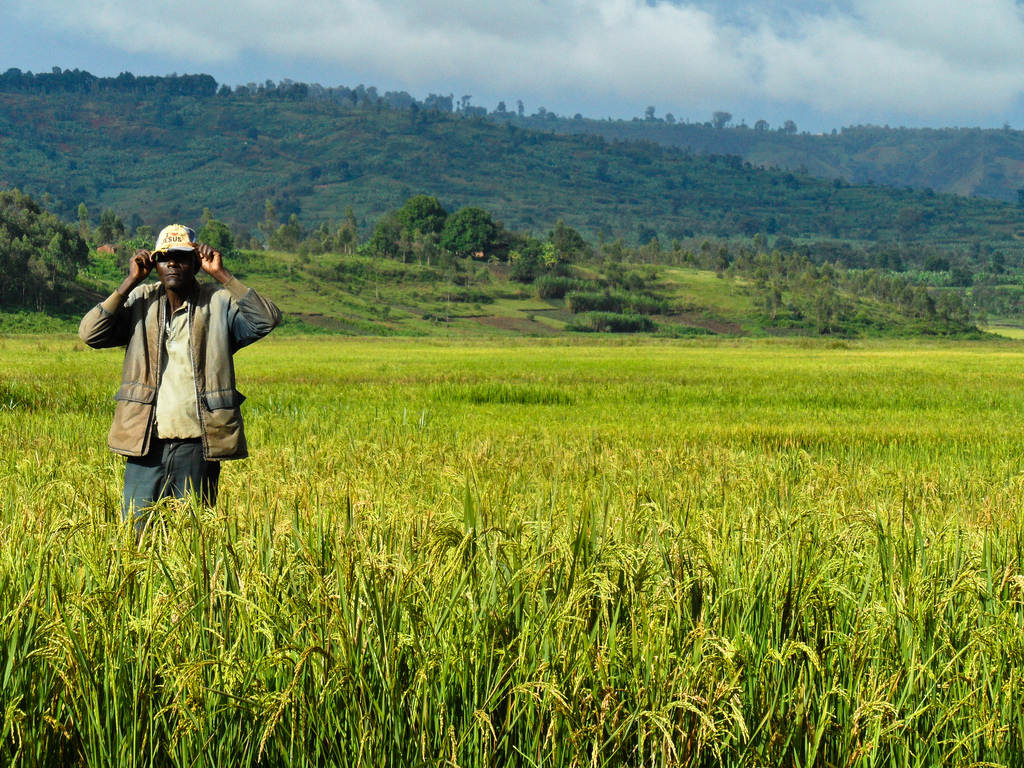Small Farmers And The Doha Round: Lessons From Mexico's NAFTA Experience
The paper is divided into three parts: Section I briefly introduces how developing countries have sought to protect the interests of small and marginal farmers in the on-going Doha round and the current state of play in those negotiations. Section II discuses the integration of Mexican agriculture in global markets under NAFTA and why the brunt of the adjustment was borne by small and marginal farmers. And finally, Section III proposes an alternate model of agricultural modernization centered on small-farmers and why for developing countries the stakes are much higher than for Mexico. I: Introduction - Special Products and the Special Safeguard Mechanism At the heart of addressing livelihood concerns of small farmers in developing countries in the on-going Doha round of WTO negotiations is the designation of Special Products (SPs) and Special Safeguard Mechanisms (SSM) in the Agreement on Agriculture. Developing countries have argued that SPs - products linked to food security and livelihood security - should either be subject to no tariffs or small reductions. An SSM would allow a temporary increase of relevant tariffs in response to a pre-specified increase in import volumes or decline in price levels. In designing the use of both these instruments the G33 and other developing country groupings in the WTO have sought to amplify the policy space available to developing countries in dealing with livelihood concerns while continuing to integrate into the global economy. The reason for framing livelihood issues in this manner is the understanding that small and marginal farmers, at least in most developing countries including India, lead an exceedingly precarious economic existence and are not positioned to compete effectively in relatively open agricultural markets, particularly given the levels of subsidies enjoyed by agricultural producers in developed countries. Therefore, first, in a situation where reasonable opportunities of migrating out of agriculture are limited even in rapidly growing economies, forcing farmers off their land through import competition is both economically and politically unsustainable. Second, given the above, the flexibilities sought in the use of instruments have to be put in the context of the seriously limited policy space available to developing countries in helping small and marginal farmers cope with import competition, given that direct production subsidies of various sorts are WTO-illegal. In this light, Crawford Falconer's new negotiating text for the Agreement on Agriculture makes disappointing reading. By offering that the SSM be activated if prices decline by 30% or more and far fewer SPs than the G33 have asked for[1], the text makes a mockery of livelihood concerns of small farmers that is at the heart of the developing country and Indian position. Little wonder then that India has said that the new text is "totally unacceptable"[2]. More specifically, the G33 statement 26th May 2008 commenting on the draft text says "that specific fundamental elements of SPs & SSM have not been incorporated."[3] Equally pointedly, the statement of the Small Vulnerable Economies Group on the draft text notes, among other things, that as far as the SSM is concerned, "lamentably the text is very far from reflecting a possible agreement, because the dispositions contained therein turn it into a mechanism without utility for the developing countries."[4] II: Mexico - NAFTA and agricultural modernisation For anybody who doubts that, without safeguards, the brunt of adjustment costs of integrating relatively low-productivity agriculture into international markets is borne by small and marginal farmers, a close look at Mexico's post-NAFTA experience would be salutary. Even Felipe Calderon, Mexico's President and an acolyte of neoliberal economics, has had to acknowledge that Mexico, at least in part as a result of agriculture's integration into global markets, is faced with an unprecedented agrarian crisis. At a recent press conference in May when the German Chancellor Angela Merkel was visiting Mexico, he said that high levels of subsidies available to European and US farmers had a debilitating effect on the competitiveness of Mexican farmers, resulting in a large number of his compatriots migrating to the US "abandoning land, because it was simply impossible to compete with subsidies in other countries"[5]. To be sure all of Mexican agriculture's current problems cannot be ascribed to NAFTA. They go back at least to the early 1980s, when the "sowing petroleum" strategy – using oil revenues and public investment to subsidise agricultural growth and achievement of food-security - collapsed on the back of sharply declining oil prices and the subsequent debt crisis of 1982[6]. In the macroeconomic retrenchment that followed agriculture suffered sharp cuts in public investment and subsidy levels. But it was Mexico's accession into GATT in 1986 that made possible a new strategy based on global economic integration. As a result in 1989, during Carlos Salinas's presidency, a strategy of agricultural 'modernization', centered around global integration, private investment and markets, was put in place. Salinas amended the Mexican Constitution to make it easier to buy and sell communally owned land, substantially reduced the role of the state in rural economic activity including the privatization of state-owned enterprises in distribution and storage and moved relative prices in favour of agricultural exports. This of course has to situated within the overall swing in Mexican economic policy making that took place in the late 1980s towards market fundamentalism. The hope was that secure property rights and a market-led economy would ensure a private investment driven revival of agricultural growth in line with comparative advantage[7]. NAFTA, which entered into force in 1994, essentially built on all of the above institutional changes and sought to lock-in agricultural trade among NAFTA partners in terms of comparative advantage. Vis-à-vis the USA (and Canada), Mexico was at a comparative dis-advantage in grains (corn, wheat, rice), oilseeds, cattle rearing and forestry. It has a comparative advantage in fruits, vegetables sugar cane and coffee[8]. It was also felt that as a result of relatively backward and low-productivity agriculture, the share of agriculture and allied sectors in its workforce - in 1991 it accounted for 27% - was much larger than was warranted given its level of development. Comparative advantage driven modernization of agriculture therefore, it was hoped, would also help shift labour towards higher productivity non-agrarian occupations[9]. The hold of market fundamentalism was so strong among Mexico's business and economic policy making elites that market driven comparative advantage was an article of faith. There was very little discussion of the fact that what is important for growth is not static but dynamic comparative advantage. That markets left to themselves, do not automatically deliver dynamic comparative advantage, which depends upon the evolution of institutions and technological and learning capabilities[10]. That successful development experience is also the successful shaping of the evolution of dynamic comparative advantage through purposive public policy[11]. Be that as it may, as a result of NAFTA therefore, in agriculture and related trade, Mexico imports basic foodstuffs – corn, wheat, rice, soya, beef, pork, chicken meat, milk – and exports tomatoes, peppers, fruits, vegetables and beef cattle. Among agro-based products beer, tequila and canned fruits and vegetables are important. Some of the outcomes that designers of NAFTA had hoped for have come about. Agricultural exports have grown three-fold since the agreement and Mexico's agricultural exports are today much more diversified towards higher value products. And before the current spike in the price of foodgrains, agricultural exports had finally begun growing faster than imports, narrowing the agricultural trade deficit. Equally importantly, there has been improvements in agricultural productivity. As a result, some economists have argued that NAFTA has been good for Mexican agriculture[12]. Despite these improvements, agriculture overall has not performed very well. Not only has it, in the post-NAFTA period, grown slower then GDP, but equally importantly, growth has decelerated as compared with the decade earlier[13]. Whatever be the gains that have been achieved, and as we have seen, there have been some, the very nature of these gains has adversely affected small farmers. And the reasons are fairly straightforward[14]. 12% of Mexico's arable land is devoted to agriculture and 54% to cattle ranching. Of the cultivated land, 71% is devoted to grains and oilseeds and only 9% to fruits and vegetables. Therefore the bulk of cultivated area is adversely affected by import competition. 85% of Mexico's farmers are small and marginal and grow largely grains and oilseeds. About 16% of farmers grow fruits and vegetables and most of these are medium and large farmers, largely because the investment required for growing fruits and vegetables is beyond the reach of most small-farmers. Therefore it is small farmers that have borne the brunt of import competition. The vacuum created by retreat of the Mexican state from agriculture was filled by large US and Mexican agribusiness. In the post-NAFTA period the bulk of FDI in agricultural sector has been in the agri-business and agro-processing rather than agriculture[15]. As a result a few large trans-national agribusiness firms, mostly US and Mexican, dominate storage, flour milling, grain trading[16] and meat processing. Put differently they dominate the intermediation chain that takes crop or cattle and makes it a marketable commodity. Transnational agribusiness has used this dominant position and a process of vertical and horizontal integration to establish an overwhelming presence in the market for wheat, rice, corn, soya, poultry, meat, pork and eggs. Transnational agri-business tends to have much closer links with larger farmers and producers, who have better access to land, irrigation and credit, all of which are scarce commodities for small farmers[17], particularly after the withdrawal of the state. And the little state assistance that remains tends to inordinately favour larger farmers. Little wonder then that it is the larger farmers that have taken advantage of global integration and changing cropping patterns and now account for a larger proportion of domestic markets. Alongside this, as hoped for by designers of NAFTA, has been 'modernisation' - a sharp decline in the share of agriculture and allied sectors in the workforce. From nearly 27% in 1991 it declined to slightly less than 15% in 2006, losing more than 2 million jobs[18]. Again small and marginal farmers and agricultural labour bore the brunt, as evidenced by very sharp decline in the number of rural households. According to a study by Jose Romero and Alicia Puyana carried out for the federal government of Mexico, between 1992 and 2002, the number of agricultural households fell an astounding 75% - from 2.3 million to 575, 000[19]. There has been a significant increase in migration out of rural areas as livelihoods are lost and farms have been abandoned. The hope was that this migration out of low-productivity agriculture would be absorbed into higher-productivity non-agrarian urban employment. But anemic employment growth in the post-NAFTA period, particularly in manufacturing[20], put paid to that. And what little employment there has been has largely been in the informal sector. As a result there has been a change in the pattern of rural out-migration. In the 1980s the likelihood of migrating to urban Mexico was higher than that of migrating to the USA. Today, as a result of anemic employment growth, the likelihood of migrating to the USA is significantly higher[21]. The World Bank estimates that between 2000-05, 400,000 Mexicans migrated to the USA annually[22]. According to other estimates this number is closer to 500,000[23]. 300,000 of these are from rural Mexico and again mostly small, marginal farmers and agricultural labour[24]. To put this in context between 1994 and 2004, Mexico's labour force grew by approximately 1 million annually[25]. So effectively today Mexico imports food from the USA and exports farmers and agricultural labour. Again to lay all the problems of Mexican agriculture at NAFTA's door would be incorrect[26], though few would disagree that it has been a contributing factor. The problems facing Mexican agriculture are the result of systematic underinvestment in agriculture from the early 1980s, way before NAFTA was signed[27]. But the reason why NAFTA complicates matters is because it is a multilateral agreement that essentially protected rights of big capital (investor protection) and enhanced its mobility (within North America)[28] to the detriment of other factors. In agriculture, it essentially protected the interests of large Mexican and US agri-business and adversely affected the ability of small and marginal farmers in Mexico to cope with import competition[29]. And this because their interests were not represented at the negotiating table[30]. It had been hoped that NAFTA would lead to an increase in investment in Mexican agriculture, but that did not materialize. A sector that accounts for more than 5% of GDP accounts for less than 1% of its investment and the underinvestment noted earlier has continued in the post-NAFTA period. And what investment there has been, as we have seen, marginalized small farmers even further by reducing their access to the intermediation chain and therefore their ability to compete in the market. It is not just the fact that Mexico's small and marginal farmers have borne the brunt of the adjustment of Mexican agriculture's integration into global markets. The spike in food prices in the last couple of years has put enormous pressure on its BOP and the agricultural trade deficit that had begun narrowing has widened sharply, putting in sharp focus issues of food security. According to the Mexico's Inter-Institutional Working Group on Foreign Trade the import bill for cereals more than doubled in the first trimester of 2008 as compared with the same period last year[31]. Even though no where as sharp as the increase in the cereal import bill, price increases has meant that import costs of oilseeds, milk, eggs, meat and meat products has increased significantly. At the same time prices for most of Mexico's agricultural exports such as fruits and vegetables have either stagnated or declined. In many ways therefore, despite the strides in agricultural exports, Mexico's NAFTA based transnational agri-business driven agricultural strategy must be deemed a failure. Food production has stagnated, cultivated area under food production has declined and the underinvestment that has characterized Mexican agriculture in the 1980s has not been reversed. The problem of food security has reappeared and because of large migration of farmers and farm labour to USA, depleting the rural countryside of the human resources it requires for an agrarian revival, even if public policy chose to focus on it. III: An alternate modernisation model If the declining share of agriculture in the workforce alongside increasing per capita incomes is one of the most robust stylizations in development economics, it does not follow, as the experience of Japan, South Korea and Taiwan tells us, that the brunt of this adjustment necessarily has to be borne by small farmers. At issue is the nature of the agricultural modernization model – should it be based on land alienation driven by large farmer and transnational agri-business interests, where both these dominate the rural landscape; or will it be a model based on mixed income households where small farmers are competitive because of achieving economies of scale and scope in the purchase of inputs and in processing, storing, marketing and distributing their crops and with a significant proportion of household labour involved in non-farm activity as well. The key therefore lies in intermediating between the small farmer and the market in a way that enhances both his/her profitability and market opportunities. As Alicia Puyana commenting on the stagnation in Mexico's grain production and the widening gap between USA and Mexico notes "To make domestic products competitive, it is not sufficient to open markets to foreign competition."[32] What development experience does teach us, and Mexico is a good example, is that the market left to itself will not invest in intermediation infrastructure for small farmers – credit, storage, marketing, input purchase and extension. Wherever such investment has happened it has been through co-operative mechanisms or public sector involvement or a mix of both. India's dairy industry and the Amul brand are very good examples. Therefore both these – large farmer and trans-national agri-business centered and small farmer and co-operative agri-business centered - are feasible and extant models, even though most people (and most economists) associate modernization with the former. As Dr. M.S. Swaminathan, architect of India's green-revolution and former Chair of the National Commission of Farmers, has repeatedly argued, India and other developing countries need a second green revolution but this time centered not around land alienation and large farmers but land conservation and small-farmers. He argues that the energy intensive agronomic practices of the first green revolution should be eschewed in favour of a small-farmer based green revolution where traditional methods of soil health enhancement and pest management should be refined and blended with modern technology[33]. A small-farmer centered green revolution alongside a co-operative and/or public sector driven investment in market intermediation infrastructure – credit, extension, input-purchase, storage, trading, marketing, and insurance – would ensure that small farmers are both profitable and productive. This strategy would, as he argues, address concerns about food-security, livelihood security, environmental conservation and sustainable growth. Therefore one part of the solution to the problem of food-security and sustainable growth is in the hands of 450 million small and marginal farmers (globally) that neoliberal economic policy has tried so hard to alienate from their land. And in addition if we are able to put in place a strategy of maximising non-agrarian employment growth, then rural-to-urban migration, which is necessary concomitant of per capita income growth, would be a matter of choice and not compulsion. It is useful to remember that in 1991 – prior to the advent of NAFTA - agriculture and allied activities only accounted for 27% of Mexico's labour force. In other words, the occupational structure transition that is characteristic of increasing per capita incomes was already underway. For most developing countries including India however, even today agriculture and allied activities account for more than 50% of their workforce. Therefore an agricultural modernization programme that does not take into account the needs of small and marginal farmers and agricultural labour would not only economically but equally importantly, politically, unsustainable. Equally, it is important to remember that 95 percent of the world small and marginal farmers live in poor, developing countries and that 75% of the world's poor survive on agriculture. For developing countries therefore the key to both food security and livelihood security is the ability to protect small and marginal farmers from unfair competition and the policy space within which develop an agricultural policy centered around small-farmers and the maximization of employment growth. Therefore whether or not Mexico's current agrarian crisis can be blamed entirely in NAFTA is beside the point. What it does suggest however is that when economies asymmetrically situated in terms of productivity integrate, then left to the market, the burden of adjustment is borne by agents with the lowest productivity – in this instance small farmers and agricultural labour in Mexico. This effect gets compounded when agents in the higher productivity economies are subsidized to maintain income levels (in this instance farmers in USA and Canada). But as we have seen integration and modernization does not have to be like this. Economies should be allowed to choose the pace and pattern of integration and modernisation, defined as sustained and sustainable increase in per capita incomes, depending upon their institutional structures and historical trajectories. Clearly one size does not fit all. Therefore if developing countries are not given the policy space within which to protect small and marginal farmers and modernize their agriculture, they should walk away from Doha. Most in any case do not even have Mexico's option of exporting farmers and farm labour to USA. (Mritiunjoy Mohanty is an Assistant Professor of Economics at the Indian Institute of Management Calcutta (IIM Calcutta) in Kolkata. He is currently on leave and a Visiting Researcher with Institut d'études internationales de Montréal (IEIM) of the Université du Québec à Montréal (UQAM), Montreal, Canada. He is grateful to Maurice Dufour for comments on earlier versions. He can reached at mritiunjoy@gmail.com) [1] See 'No trade deal without livelihood concerns: India', Hindu News Update Service, 20th May 2008. Available at http://www.hinduonnet.com/thehindu/holnus/001200805202023.htm [2] See 'No trade deal without livelihood concerns: India', Hindu News Update Service, 20th May 2008. [3] See page 3 of the G-33 Statement: COA-SS Open Ended, 26th May 2008. Available athttp://www.tradeobservatory.org/library.cfm?refID=102829 [4] See 'Intervención de República Dominicana en nombre Del Grupo de las Economías Pequeñas, Vulnerables', Reunión Informal del Comité de Agricultura en Sesión Especial, 26th May 2008. Translation mine. Available at http://www.tradeobservatory.org/library.cfm?refID=102830 [5] See 'El país paga un "costo muy alto" para evitar aumentos de precios', Angélica Enciso, La Jornada, 20th May 2008. Translation mine. Available at http://www.jornada.unam.mx/2008/05/20/index.php?section=economia&article=021n1eco [6] See for example Mohanty, M., (1990) 'Structural Characteristics of the Mexican Economy, 1942-82', Social Scientist, Vol. 18, No. 5, May, pp 42-64 [7] See the discussion in section III of Yúnez-Naude, A., (2002) "Lessons from NAFTA: The Case of Mexico's Agricultural Sector." Background paper for D. Lederman, W.F. Maloney and L.Serven, (2004), Lessons from NAFTA for Latin America and the Caribbean, The World Bank, April [8] See for example Appendini, K., (1994) 'Agriculture and Farmers within NAFTA: A Mexican Perspective' in V. Bulmer-Thomas, N. Craske, and M. Serrano (eds.), Mexico and the North American Free Trade Agreement: Who Will Benefit?, St. Martins Press, New York. [9] See de Ita, A., (2008), 'Fourteen Years of NAFTA and the Tortilla Crisis', Americas Program Special Report, Center for International Policy. Available at http://americas.irc-online.org/am/4879 [10] On the importance of dynamic comparative advantage and the role of policy in shaping it see Chapter 6 in Krugman, P. and M. Obstfeld, (2006), International Economics : Theory and Policy, 7th Edition, Addison-Wesley [11] See for example Chang, Ha-Joon, (2002), Kicking Away the Ladder: Development Strategy in Historical Perspective, Anthem Press, London and New York [12] See for example Yúnez-Naude (2002). Also see Rosenzweig, A., (2005), El debate sobre el sector agropecuario mexicano en el Tratado de Libre Comercio de América del Norte, Serie Estudios y Perspectivas #30, Unidad Agricola, Cepal, Mexico; and Hufbauer, G.C. and J. J. Schott, (2005) NAFTA Revisited: Achievements and Challenges, Institute for International Economics, Washington, DC. [13] See de Ita (2008), 'Fourteen Years of NAFTA and the Tortilla Crisis'. [14] This paragraph is based on de Ita (2008), 'Fourteen Years of NAFTA and the Tortilla Crisis'. [15] Carpentier, C.L., (2001), 'Trade Liberalization Impacts of Agriculture: Predicted vs. realized' Working Paper, North American Commission for Environmental Cooperation [16] On the concentration of agri-business in Mexico see pp 71-72 in Rosenzweig (2005). [17] On the problems facing small and marginal farmers see Romero, J. and A. Puyana, (2004), Diez años con el TLCAN, las experiencias del sector agropecuario mexicano, El Colegio de México, Mexico. See also the discussion on access to credit on pp 63-65 in Rosenzweig (2005). [18] See de Ita (2008). Also see Polaski, S., (2006), The Employment Consequences of NAFTA, Testimony submitted to the Senate subcommittee on International Trade of the Committee on Finance [19] See Romero and Puyana, (2004), Diez años con el TLCAN, las experiencias del sector agropecuario mexicano. [20] See Polaski (2006), The Employment Consequences of NAFTA [21] See Yúnez-Naude, A., and J.E. Taylor (n.d.) Los impactos del TLCAN en la emigración rural, Folletín informativo No. 2, PRECESAM, El Colegio de Mexico. Available at http://precesam.colmex.mx/Folletines/Folletin%20No.%202.htm [22] 'México, el mayor expulsor de migrantes del planeta, dice el BM' Roberto Gonzalez Amador, La Jornada, 16th April 2007. Available at http://www.jornada.unam.mx/2007/04/16/index.php?section=politica&article=003n1pol [23] See Spieldoch, A., (2008) 'NAFTA Takes the Political Spotlight: It's about time', 17th March, Commentary, IATP Observatory. Available at http://www.iatp.org/iatp/commentaries.cfm?refID=102007 [24] See 'Desempleo, migración y escasez' 26th December 2007, La Jornada. Available at http://www.jornada.unam.mx/2007/12/26/index.php?section=politica&article=003n2pol [25] See Polaski (2006), The Employment Consequences of NAFTA [26] See Romero and Puyana, (2004), Diez años con el TLCAN, las experiencias del sector agropecuario mexicano [27] See Romero and Puyana, (2004), Diez años con el TLCAN, las experiencias del sector agropecuario mexicano [28] See for example McDonald, M., (1996) Yankee Doodle Dandy: Brian Mulroney & the American Agenda, Stoddart Publishing, Toronto; and MacArthur, J.R., (2001), The Selling of "Free Trade" - NAFTA, Washington, and the Subversion of American Democracy, University of California Press, Berkeley, California. [29] See Appendini (1994), 'Agriculture and Farmers within NAFTA: A Mexican Perspective' [30] See de Ita (2008). [31] See 'Subieron 102% importaciones de cereales entre enero y marzo' Juan Antonio Zúñiga, La Jornada, 20th May 2008. Available at http://www.jornada.unam.mx/2008/05/20/index.php?section=economia&article=020n1eco [32] Quoted in 'El agro mexicano llega polarizado y mermado al último tramo del TLCAN' Miriam Posadas y Matilde Pérez , La Jornada, 29th December 2007. Translation mine. Available at http://www.jornada.unam.mx/2007/12/29/index.php?section=politica&article=005n1pol [33] See 'Global Food Crisis and Indian Response', M.S. Swaminathan, The Hindu, 2nd June 2008. Available at http://www.hindu.com/2008/06/02/stories/2008060255061000.htm Mritiunjoy Mohanty


